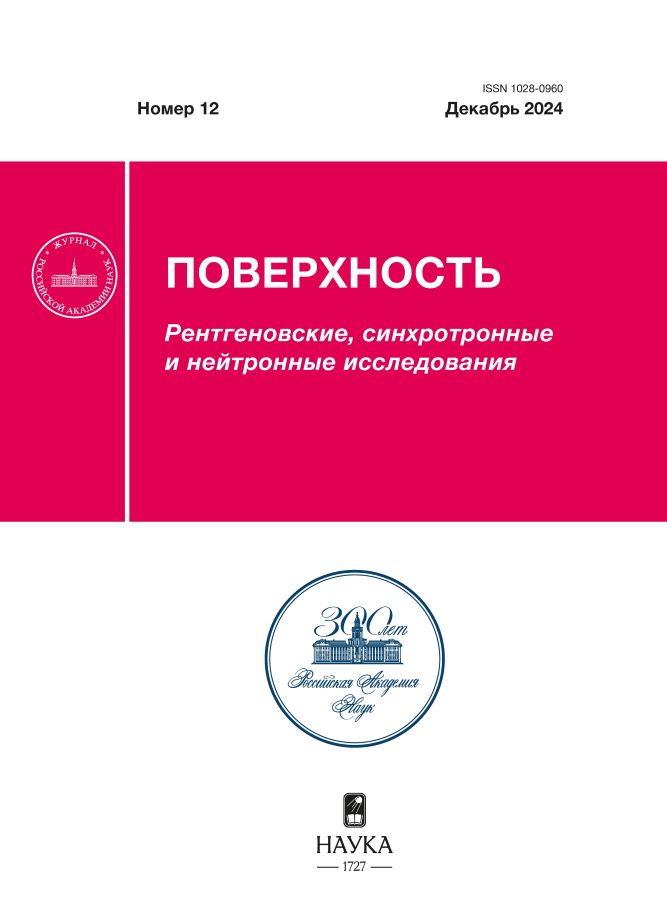Magnetic field-induced quantum phase transitions in a quasi-two-dimensional electron system in GaAs quantum wells of different widths
- 作者: Kapustin А.А.1, Dorozhkin S.I.1, Fedorov I.B.1
-
隶属关系:
- Osipyan Institute of Solid State Physics, Russian Academy of Sciences
- 期: 编号 12 (2024)
- 页面: 86-93
- 栏目: Articles
- URL: https://rjdentistry.com/1028-0960/article/view/685359
- DOI: https://doi.org/10.31857/S1028096024120101
- EDN: https://elibrary.ru/QWSTXI
- ID: 685359
如何引用文章
详细
Using the original magnetocapacitance technique based on simultaneous measurements of magnetocapacitances between a quasi-two-dimensional electron system in a single GaAs quantum well and two gates placed on its opposite sides we have studied magnetic field induced quantum phase transitions between double-layer and single-layer-like states of the system. The measurements have been performed with samples of quantum well width 50 and 60 nm. The double-layer state was composed of layers of two-dimensional electrons confined near the opposite walls of the quantum well. It is characterized by the quantum magneto-oscillations of the compressibility of each of the layers with a frequency determined by the density of electrons in the corresponding layer. In a single-layer-like state, the compressibility minima have been observed only when all electrons occupied one or two spin sublevels of the lowest Landau level (when the total filling factor νtot = 1 and 2), and the ratio of the measured capacitances in this state was characteristic of the case when only one electronic layer existed between the gates. It has been found that the first transition from a double-layer to a single-layer-like state took place when the quantum limit was reached, i.e. when νtot ≈ 2, independent of either the density of electrons in the system or the quantum well width. A different behavior of electronic systems has been found in wells of different widths in the region 1 < νtot < 2. In a 50 nm well, the single-layer-like state existed in the whole studied region of filling factors νtot ≤ 2. In a 60 nm well, a double-layer region has been observed within 1 < νtot < 2 accompanied by an incompressible state of electrons in the layer with the largest density at filling factor unity in this layer. As a result, three magnetic-filed-induced quantum phase transitions have been observed in samples with 60 nm quantum well width, whereas only one quantum phase transition has been observed in a sample with 50 nm quantum well width. Such a dependence of the character of the quantum phase transition on the quantum well width is supposedly caused by the different tunneling strength between the layers. The formation of magnetic-field-induced compressible single-layer-like state in a nominally double-layer electronic system has been discovered.
全文:
作者简介
А. Kapustin
Osipyan Institute of Solid State Physics, Russian Academy of Sciences
编辑信件的主要联系方式.
Email: kapustin@issp.ac.ru
俄罗斯联邦, Chernogolovka
S. Dorozhkin
Osipyan Institute of Solid State Physics, Russian Academy of Sciences
Email: kapustin@issp.ac.ru
俄罗斯联邦, Chernogolovka
I. Fedorov
Osipyan Institute of Solid State Physics, Russian Academy of Sciences
Email: kapustin@issp.ac.ru
俄罗斯联邦, Chernogolovka
参考
- Champagne A.R., Finck A.D.K., Eisenstein J.P., Pfeiffer L.N., West K.W. // Phys. Rev. B. 2008. V. 78. № 20. P. 205310. https://www.doi.org/10.1103/PhysRevB.78.205310
- Kellogg M., Eisenstein J.P., Pfeiffer L.N., West K.W. // Phys. Rev. Lett. 2004. V. 93. № 3. P. 036801. https://www.doi.org/10.1103/PhysRevLett.93.036801
- Piazza V., Pellegrini V., Beltram F., Wegscheider W., Jungwirth T., MacDonald A.H. // Nature. 1999. V. 402. P. 638. https://www.doi.org/10.1038/45189
- Khrapai V.S., Deviatov E.V., Shashkin A.A., Dolgopolov V.T., Hastreiter F., Wixforth A., Campman K.L., Gossard A.C. // Phys. Rev. Lett. 2000. V. 84. № 4. P. 725. https://www.doi.org/10.1103/PhysRevLett.84.725
- Дорожкин С.И., Капустин А.А., Федоров И.Б., Уманский В., смет Ю.Х. // Письма в ЖЭТФ. 2023. Т. 117. № 1. С. 72. https://www.doi.org/10.31857/S123456782301010X
- Deng H., Liu Y., Jo I., Pfeiffer L.N., West K.W., Baldwin K.W., Shayegan M. // Phys. Rev. B. 2017. V. 96. № 8. P. 081102(R). https://www.doi.org/10.1103/PhysRevB.96.081102
- Zhang D., Schmult S., Venkatachalam V., Dietsche W., Yacoby A., von Klitzing K., Smet J. // Phys. Rev. B. 2013. V. 87. № 20. P. 205304. https://www.doi.org/10.1103/PhysRevB.87.205304
- Jungwirth T., MacDonald A.H. // Phys. Rev. B. 2000. V. 63. № 3. P. 035305. https://www.doi.org/10.1103/PhysRevB.63.035305
- Kellogg M., Spielman I.B., Eisenstein J.P., Pfeiffer L.N., West K.W. // Phys. Rev. Lett. 2002. V. 88. № 12. P. 126804. https://www.doi.org/10.1103/PhysRevLett.88.126804
- Liu X., Watanabe K., Taniguchi T., Halperin B. I., Kim P. // Nature Phys. 2017. V. 13. P. 746. https://www.doi.org/10.1038/NPHYS4116
- Li J.I.A., Taniguchi T., Watanabe K., Hone J., Dean C.R. // Nature Phys. 2017. V. 13. P. 751. https://www.doi.org/10.1038/NPHYS4140
- Dorozhkin S.I., Kapustin A.A., Fedorov I.B., Umansky V., von Klitzing K., Smet J.H. // J. Appl. Phys. 2018. V. 123. № 8. P. 084301. https://www.doi.org/10.1063/1.5019655
- Kozlov D.A., Bauer D., Ziegler J., Fischer R., Savchenko M.L., Kvon Z.D., Mikhailov N.N., Dvoretsky S.A., Weiss D. // Phys. Rev. Lett. 2016. V. 116. № 16. P. 166802. https://www.doi.org/10.1103/PhysRevLett.116.166802
- Dorozhkin S.I., Kapustin A.A., Fedorov I.B., Umansky V., Smet J.H. // Phys. Rev. B. 2020. V. 102. № 23. P. 235307. https://www.doi.org/10.1103/PhysRevB.102.235307
- Федоров И.Б., Дорожкин С.И., Капустин А.А. // Поверхность. Рентген. синхротр. и нейтрон. исслед. 2021. № 11. С. 62. https://www.doi.org/10.31857/S1028096021110078
- Капустин А.А., Дорожкин С.И, Федоров И.Б., Уманский В., смет Ю.Х. // Письма в ЖЭТФ. 2019. Т. 110. № 6. С. 407. https://www.doi.org/10.1134/S0370274X19180103
- Девятов Э.В. Вертикальное и латеральное туннелирование в двумерных электронных системах и структурах на их основе: Дис. канд. ф.-м. наук: 01.04.07. Черноголовка: Институт Физики Твердого Тела РАН, 2000. 94 с.
- Dolgopolov V.T., Shashkin A.A., Deviatov E.V., Hastreiter F., Hartung M., Wixforth A., Campman K.L., Gossard A.C. // Phys. Rev. B. 1999. V. 59. № 20. P. 13235. https://www.doi.org/10.1103/PhysRevB.59.13235
- Долгополов В.Т., Шашкин А.А., Аристов А.В., Шмерек Д., Хансен В., Коттхаус Й.П., Холланд М. // УФН. 1998. Т. 168. № 2. С. 147. https://www.doi.org/10.3367/UFNr.0168.199802j.0147
- Ashoori R.C. The density of states in the two-dimensional electron gas and quantum dots: PhD thesis. Cornell University, 1991. 256 p.
补充文件












